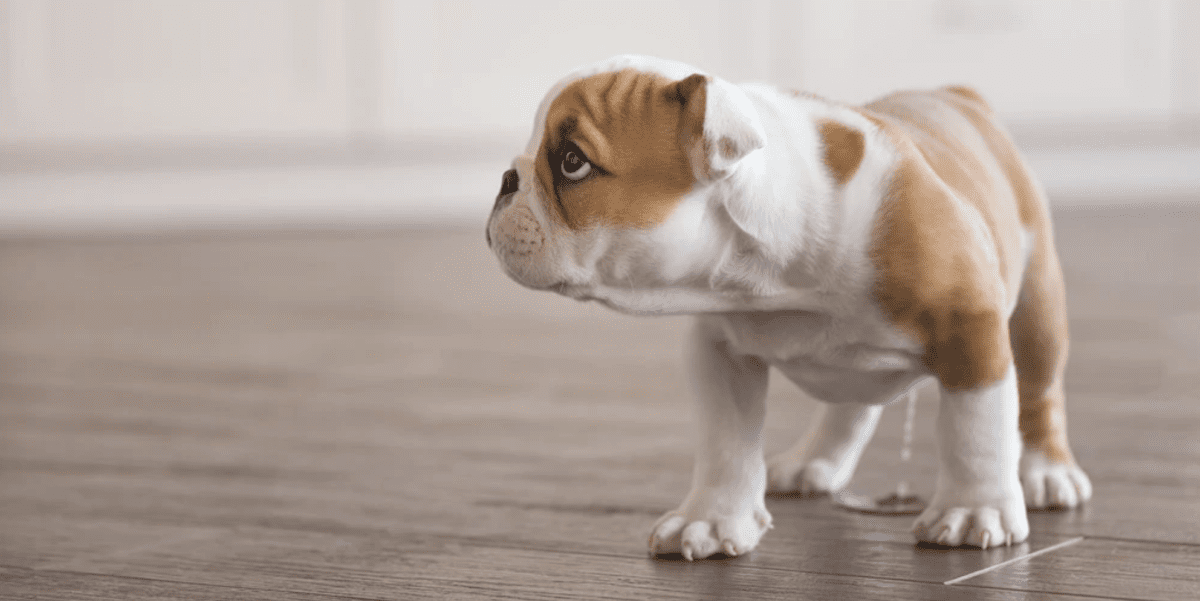Many dogs are prone to bladder problems, especially those suffering from diabetes or older females. One of the most common bladder issues is the formation of crystals. Crystals are minerals that bond together and, if they get large enough, can block the urine passage.
Why PH Matters
When the pH level in your dog’s urine becomes compromised, bladder problems frequently result. PH neutral is 7, but the normal PH range for dogs (and cats) on a meat-based diet is 6-6.5, carnivores having a slightly acidic urine. Dogs suffering from poor nutrition, or dogs fed a primarily grain-based diet, may develop an alkaline urine, which occurs when their pH becomes too high (ie: over 7).
Correct nutrition can help manage pH levels, thus reducing the risk of bladder disease and infection, as well as the formation of stones.
Crystals
Many different types of crystals may be present in urine and the type of crystals formed depends on a variety of factors, including urine pH, urine temperature and length of time between urine collection and examination. Crystals in urine are not necessarily diseased, but some types of crystals may indicate illness or an inherited metabolic problem. Struvite crystals are commonly seen in dogs and are not generally a major problem unless there is a concurrent bacterial urinary tract infection. Calcium oxalate crystals are less common in dogs and, if persistent, may indicate an increased risk of calcium oxalate bladder stone formation. Rarer crystal types include ammonium acid urate crystals, which suggest liver disease and an unusual form of calcium oxalate crystals associated with antifreeze toxicity.
Dogs with alkaline urine can be prone to getting struvite* crystals (when urine crystallises, struvite stones may form). A natural component of your dog’s urine, struvite is passed easily if the concentration of urine remains normal. If the urine becomes too concentrated and alkaline, the struvite is not passed and the formation of painful stones may result. Difficulty urinating and blood in the urine are both symptomatic of the presence of struvite bladder stones.
This can be treated by giving the dog food specially formulated to help acidify the urine and dissolve the crystals. If you choose to give homemade dog food to lower urine pH, your veterinarian/animal nutritionist can suggest a diet to follow with what kinds of foods to include, such as adding a half teaspoon of apple cider vinegar per cup of dog food, or including vitamin C or cranberry capsules. Meat protein is a natural acidifier, so look for pet foods that are high in meat content.
*Struvite is the most common mineral found in urinary tract stones in dogs, and is found also in urinary tract stones of cats and humans. Struvite stones are potentiated by bacterial infection that hydrolyzes urea to ammonium and raises urine pH to neutral or alkaline values.
While dogs with consistently high urine pH are often prone to bladder infections, it’s also possible that bladder infections cause the high pH. Alternatively, dogs with low urine pH, (ie: too acidic <6), are prone to oxalate crystals and kidney stones.
Calcium oxalate crystals forming in a dog’s urine can clump together and form bladder stones, or uroliths. These stones can block a dog’s urethra, impeding their ability to urinate. That becomes a veterinary emergency, as a dog who can’t pee can die within a few days—from either uremic poisoning or bladder rupture.
Symptoms
If your dog is afflicted with crystals or stones, you might notice blood in their urine. They may have difficulty peeing. If the stone causes an obstruction, your dog strains to urinate and is obviously in pain.
Treatment
Altho a change in diet can help dissolve struvite stones, unfortunately that’s not the case with calcium oxalate stones. If your dog has stones in his bladder or urethra, they’ll likely require surgical removal. Your vet may not be able tell what sort of stones are bothering your dog without a sample for analysis. If your dog suffers from stones but isn’t blocked, your vet might perform a urohydropropulsion, which consists of flushing out the stones via a catheter. This only works with very small stones.
Prevention
Sadly once a dog develops crystals and stones, they’re at greater risk of developing them again, even after surgical removal. To help prevent a recurrence, your vet will prescribe a specialised diet (often low in sodium, protein and oxalates). Such a diet should maintain the correct urine pH levels for your dog. Testing the dog’s urine every few months to ensure the diet helps keep their urine pH within the correct range is advised.
Always check with your veterinarian before changing your pet’s diet, medication, or physical activity routines. This information is not a substitute for a vet’s opinion.

